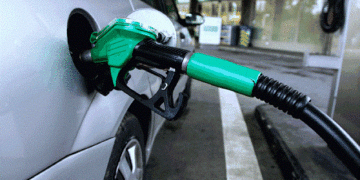Problems identified are half-solved, so the saying goes. Having highlighted some of the risks inherent in the exportation of commodities last week, let us attempt proffering some ways to mitigating and managing them since they are part and parcel of every business.
In a well-articulated monograph by LEAP Africa (Art of Managing Risks, 2015), the question of risk management was roundly discussed. This book maintained that it is imperative for businesses to incorporate risk analysis in their business plans in order to determine the possible risks the business would encounter in the foreseeable future. This would enable the business to put in right strategies in the right places to contain or eliminate these risks.
In analyzing business risks, the book suggested that businesses should use probability rating formula of low, medium and high risks to determine the possibility of the occurrence of a particular risk. This would help it, in its final analysis, to come up with a ‘Risk Matrix’ where high risks would be boldly highlighted. This keeps the business on red alert regarding such high probability risks.
Read; Commodities Export Business Risks
It went further to suggest ways of mitigating these risks when identified. We would, for the benefit of new and upcoming entrepreneurs, adopt this to suit the context of this discourse which is commodities export. By mitigation is meant strategies and ways of reducing the damages or loss any potential risk might orchestrate.
- Avoid the risk
This totally discontinues any activity that would expose the business to a particular risk which may make it lose revenue. This happens where there exist no other containment measures to manage such risks. An example would be, avoiding to site an assembling, cleaning and storage warehouse in the Benue or Northeast villages where herdsmen attack and destroy agro facilities or menace of terrorists respectively.
- Transfer the risk
This involves shifting the risk to another party legitimately. There are two major ways to do this: outsourcing and insurance. The most prevalent, unavoidable risk in export business at the moment is inland haulage. Truck owners are sucking life out of exporters currently. The best way to mitigate this is by signing in with a logistics company that manages inland hauling. This may come with some extra budget but the risk is no longer totally on the business.
Insurance presents another option to transferring risks from one company to another. By signing in with an insurance company, the exporter can rest assured that almost all things are equal. Again, it comes with some extra cost. We will discuss this insurance aspect in more details vis-à-vis some observed risks within the context of this discourse.
- Reduce the risk
This is implementing action plans that would minimize either the occurrence of the risk or loss that would come with it. This type of risk is unavoidable but can be reduced. You can balance up the loss with another positive aspect of the risk.
Read; New Agribusiness Opportunities for Economic Growth Post COVID-19 Pandemic
Instance is when you take the risk to engage a truck owner at an unbudgeted price. Having done your calculations, the amount you are paying has taken up all your profits but you are aware that the forex rate is favourable to the Dollar. So, you make up with the forex rate differentials to balance the risk.
- Retain the risk
This involves accepting the risk and managing it. It means that a proper cost-benefit analysis has been carried out to the advantage of the business. An instance is when you agree to trade on grounds of CAD (Cash Against Documents) payment terms. Because of the inherent rejection possibilities at the destination end by the buyer, which puts the remaining percentage of invoice value at risk of non-payment, you decide to increase quality assurance procedures.
If sun-drying is part of the processing before bagging, for example, you would need to ensure that it is well dried to agreed standard by the sun not an artificial drier. This eliminates high moisture content in the goods. The buyer would have little or no option than to pay your balance.
Read also; Justice for Floyd – Musings from the Caribbean
He would, as a matter of fact, stick to you and most probably bring in more funding suggestions to you if you could do it over time. You have not only retained and managed the risk, but you have also turned it to a positivity to your business.
Leveraging the insurance option
Insurance helps businesses a lot but only a few leverage this option in risk management and mitigation. There are lots of ways insurances could help businesses end-to-end. In discussing this, we take cognizance of novices among us and treat this in conjunction with commodities export risks instead of as flat academic pursuance.
- Supply Chain Risk
Supply chain management cuts across the entire gamut of a business life and so, cannot be neglected in a hurry when it comes to risks. From requisition, sourcing, processing, shipping to receiving at destination warehouse, all involve supply chain management.
- You can insure the warehouse where you are processing and storing your goods before shipment against fire outbreak or burglary
- You can insure inland haulage with goods in transit (GIT) insurance. This takes the burden off you in the event of any accident, loss or damage while in transit. The insurance company pays you complete
- You can do marine insurance for your consignment on board ocean freight. If anything happens, you are sure of your capital
- If you have mini vans that aggregate products for you in the bush, you can insure them with motor insurance against accidents, theft, etc.
- You can insure your warehouse in the Northeast with business interruption insurance which guarantees your capital in the case of disruption that would stall sales and revenue
- If you need to take cash around due to buying from different spots in the bush and unavailability of digital banking within the area, you can insure your cash with cash in transit (CIT) insurance.
There are many others.
- Credit risk
This involves payment risks by customers. At the negotiation stage with a new customer, try to be careful and eliminate or reduce the possibility of the following:
- Get all your money before shipment or at least a reasonable percentage of it
- Be sure to give the best quality to avoid rejection at destination warehouse
- Do well to reduce the amount of credit you give to customers and ensure that any outstanding is completed before the next consignment
- Make your customers your friends because that is the best way to ensure customer retention. There are other exporters waiting for you to falter so they take over that customer. For instance, if there is any payment outstanding for a previous consignment, you can agree with your customer to build it into the advance payment for a new consignment. This reduces cost of transfer for your customer and he will appreciate this gesture
Like we said last week, do due diligence on any prospective customer to avoid falling into fraudulent hands
- Competition Risk
This risk involves the struggle for the market and customers among businesses with like products and services. In Nigeria, a whole lot of businesses are into export, either directly or indirectly. This makes the competition very rife as they will fight you with low prices.
Read more; Beginners Guide to Stock Investment
The best way to mitigate this is by building a strong brand (like we pointed out in the very first discourse on commodities export) which will stand you out among the competition. You may be small within the industry but consistency of quality can distinguish you and enlarge brand loyalty among your customers. They will insist on buying from you.
Also, try to have a benchmark company within your industry. This is the company that you are looking to be like; your paradigm. Again, be sure to be up-to-date with industry best practices.
- Consumer Risk
This involves handling customer feedbacks especially where it concerns quality of products and quantity loaded in a container. We have said before that you should ensure you have your VGM (verified gross mass) certificate at all times. When issues of quantity arise, that would be your back rest.
On quality issues, ensure your customer takes a video of the goods while been unloaded from the container (which must be the one you loaded). This must show your bagging and packaging which would correspond with the loading pictures you have.
Further read; Equity Investors Lost N16.9 billion as ASI Declined by 0.13%
When all the above are ascertained (quality and quantity) and you are sure the fault is yours, be humble enough to own up the disparity to your mutual agreement. Take responsibility and pledge to make a compensation for the loss.
You can agree to make compensation by giving him extra quantities of goods till the agreed tonnage is exhausted. For instance, instead of loading 20tons, you add as much as the container can contain. Then deduct such from the invoice. You can also agree for him to deduct a certain percentage from the agreed amount but deductible in small amounts till it is exhausted. This way, you are building trust with the customer and he will not forget that.
Caveat: Do not accept whatever defect complain a customer brings without first verifying these claims from your own end and with digital evidences from his own end. If you have the cash, board a plane and go there to see it by yourself. Buyers can be very crafty sometimes.
Read more; Oil Prices Fall as Investors Fear Second Wave of Infection
Conclusively, we did not include the human resource risks here because we are most primarily concerned with smallholder exporters and newcomers whose staff strength would be next to nothing. There are many more ways to mitigate and manage different risks but as you progress in the business, you grow in experience and develop cut-to-fit ways to manage your business’ risks. See you at the top!
Written by,
Edokobi Azuka Stephen (+234 803 553 5948)
























































